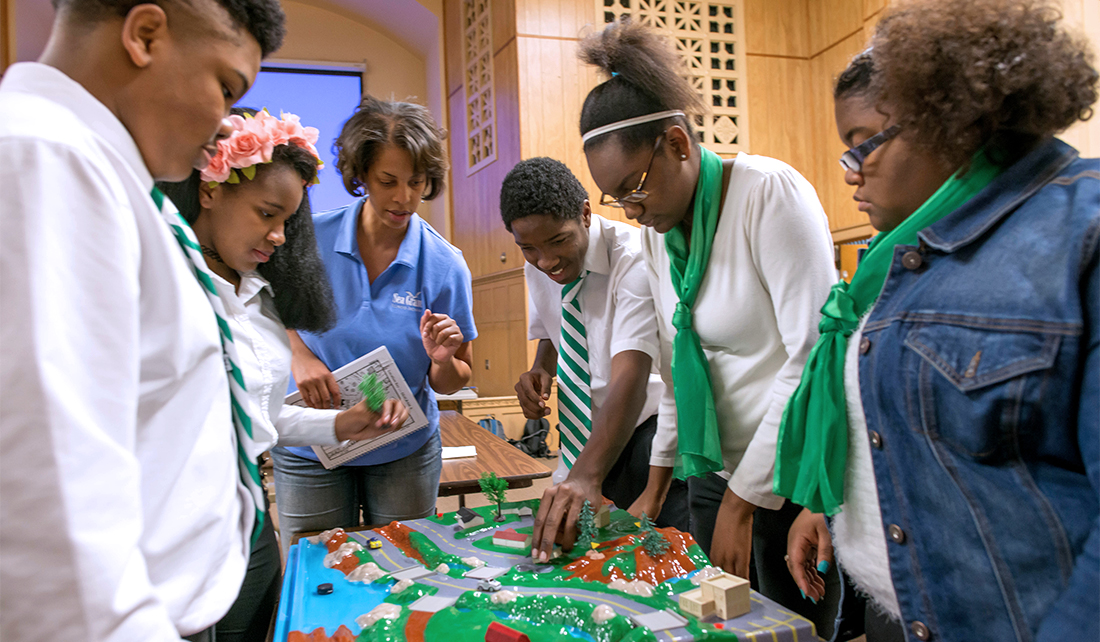
Adrienne Gulley, IISG pollution prevention outreach specialist, meets with five enthusiastic high school students from Peoria, Illinois. Gulley brought along the “EnviroScape,” a plastic model she uses to demonstrate how pollution affects water quality. The students belong to the selective 4-H Spark Tank, a program developed by University of Illinois Extension. Their goal is to “change the face of the South Side of Peoria through a beautification project” by building a hoop house—similar to a greenhouse. The students plan to raise native Illinois plants and vegetables to distribute to the community. Construction kicks off this spring.

